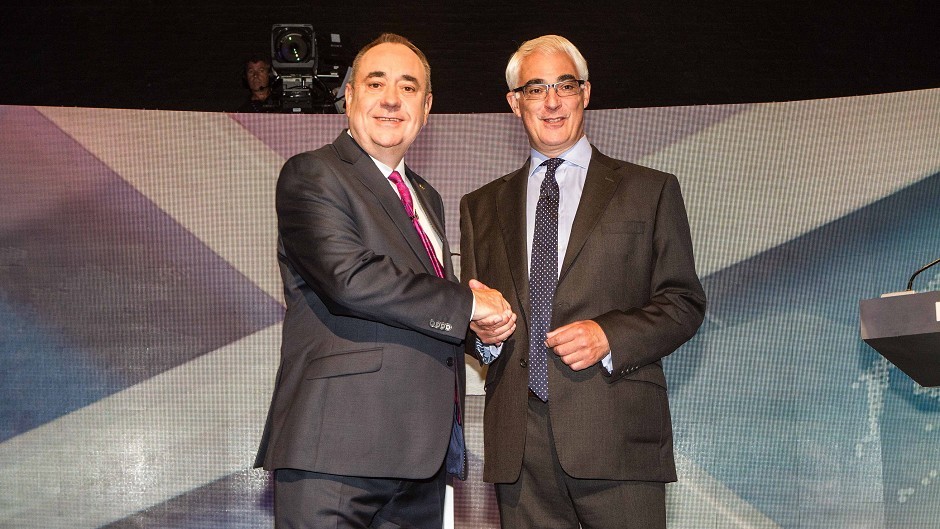A north-east politics expert has claimed that First Minister Alex Salmond failed in his attempt to woo undecided voters during a landmark referendum debate.
Professor Michael Keating, of Aberdeen University, said the SNP leader did not present a “strong, uplifting message” during exchanges with Labour MP Alistair Darling, leader of the Better Together campaign.
A snap exit poll following the television debate in Glasgow on Tuesday showed 56% of more than 500 people asked thought the former chancellor came out on top and 44% backed Mr Salmond, MSP for Aberdeenshire East.
Prof Keating, director of the ESRC Scottish Centre on Constitutional Change, said: “Alex Salmond needed a strong, uplifting message in order to win this debate and sway the undecided voters.
“He failed to provide it.
“Mr Salmond wasted his opportunity to pin Darling down, taking up valuable time with trivial point-scoring, which Mr Darling was able to wave aside.
“Mr Salmond was then put on the defensive over the pound, a predictable line of attack from the No side.”
Prof Keating said he thought the former chancellor was given “an easy ride” over the effects of a no vote and was only uncomfortable when pressed on exactly what new powers would be given to Scotland.
“Mr Salmond failed to exploit Better Together’s weakest point, which is their contention that Scotland cannot pay its own way but that UK taxpayers will continue to pay their bills,” he added.
“Neither side was able to show a positive vision for Scotland, to demonstrate how – in or out of the union – it can and will pay its own way.”
The Rev Graham Blount, acting secretary of the Church of Scotland’s church and society council, said he found the debate very “disappointing” and both men did not offer the public a “great deal of vision” for the future.
He said he did not learn any new information which led him to conclude that the debate “would not help undecided voters come to a decision” on September 18.
Free Church of Scotland minister the Rev David Robertson said the standard of debate was “appalling” and he was left “disappointed and frustrated”.
“The trouble is that we heard very little that had not already been said many times,” he added.
“My fear is that this debate will have turned many others off the whole issue.”










